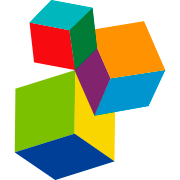
“Opioid medications are commonly used to treat chronic pain around the world. While these medications are quite effective at reducing pain, they can create opioid dependence and lead to further drug addiction. Long-term opioid use has significantly contributed to the “opioid epidemic” that is currently ravaging the United States, leading to opioid overdoses and unintentional deaths, particularly in Delaware.
Objective To determine if medical marijuana certification helps patients in Delaware with chronic pain reduce their opiate use.
Methods In this study, we examined individuals who were provided with legal; medical cannabis certifications in the state of Delaware between June 2018 and October 2019 and were concurrently being treated with opioid medications for chronic pain at a private pain management practice. Using a posthoc analysis, we conducted a retrospective cohort study on the individuals (n = 81) to determine if there was a decrease in their opioid use following medical cannabis certification. Opioid use was measured in morphine milligram equivalent (MME) through the Delaware prescription monitoring program (PMP) database.
Results Overall, the average change in prescribed opioid use was found to be -12.3 morphine milligram equivalent (MME) units when including all individuals (p < 0.00001). Among the included individuals with baseline opioid use, medical cannabis certification was associated with a 31.3% average decrease in opioid use (n = 63). When examining subgroups based upon pain location, individuals with neck pain displayed a 41.5% average decrease in MME (n = 27), while individuals with low back pain were observed to have a 29.4% decrease in opioid use (n = 58). Similarly, individuals with knee pain (n = 14) reduced their opioid use by 32.6%.
Conclusion The results display an association between medical cannabis certification and a decrease in opiate use among the study group individuals. This study suggests that medical cannabis use may help individuals to reduce their opiate requirements along with physician intervention. More research is needed to validate these findings with appropriate controls and verification of cannabis use.”
https://pubmed.ncbi.nlm.nih.gov/35004055/
“The results of this study indicate that medical marijuana certification is associated with a decrease in prescription opiate use for chronic pain treatment and supports greater use of this adjunct treatment modality. Given the significance of opioid addiction in American society, any treatment or additional resource to reduce opioid overuse can aid in the multifactorial management of chronic pain. Although marijuana use causes a variety of side effects, the findings here suggest that the use of medical cannabis as an adjunct treatment for chronic pain may be beneficial to public health.”








 “Background:
“Background:  “Human immunodeficiency virus (HIV) infection and antiretroviral therapy can independently induce HIV-associated neuropathic pain (HIV-NP).
“Human immunodeficiency virus (HIV) infection and antiretroviral therapy can independently induce HIV-associated neuropathic pain (HIV-NP).